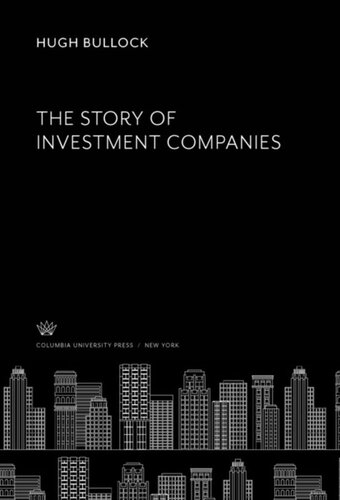
1
Our British Ancestors
ONE IMPORTANT ANCESTOR was not British.
In 1822 William I, first king of the Netherlands, established at
Brussels the oldest Belgian banking corporation, the "Société
Générale des Pays-Bas pour favoriser l'industrie nationale"—en-
titled to act as banker for the government, issue currency, and
develop agriculture, commerce, and industry in the "Southern
Provinces."
As the century progressed and Belgium separated from Hol-
land the company was the major factor in the financing of Bel-
gium's basic industries. A financial crisis in 1848 divorced the
company from its government banking functions; in 1904 its
name was changed to the Société Générale de Belgique and, in
1936, it further divested itself of commercial banking activities.
While it always would have been viewed as a banking institu-
tion and, later, as a finance or holding company rather than an
investment company, today it has several of the characteristics
of a true investment company. Its interests are world-wide and
embrace some eighty companies in a score of major industries.
It was and is the major factor in the Belgian Congo. Net worth
is difficult to determine, but on December 31, 1958, the com-
pany's assets appeared to approximate the equivalent at book
value of $125 million, which is a figure undoubtedly far below
their actual worth.
THE FOREIGN AND COLONIAL
GOVERNMENT TRUST
While the International Financial Society of London was or-
ganized in 1863 with the financial assistance of the Crédit
Mobilier of Paris—itself performing some functions analogous
to those of an investment company—the company, like the
Société Générale, could not be compared with an investment
trust until many years later. A similar reservation must be ap-
plied to the Continental Union—formerly the Continental
Union Gas Co., registered in 1864. The London Financial As-
sociation, formed in 1863, could be said, by stretching the
imagination, to have had some characteristics of an investment
trust, but it was unsuccessful.
Meanwhile, in 1868, the Foreign and Colonial Government
Trust was founded in London. Since its purpose from the very
start, according to its prospectus, was to provide "the investor
of moderate means the same advantages as the large capitalist,
in diminishing the risk of investing in Foreign and Colonial
Government Stocks, by spreading the investment over a num-
ber of different stocks,"
1 and since it engaged in no financing
or banking operations, it can be said—in so far as research en-
ables us to tell—that this investment trust was the pioneer of
them all.
And this pioneer initially resembled in some respects what
we would call today a fixed or unit trust, although there were
certain elements of flexibility and discretion allowed.2
Against
the deposit with the private banking house of Glyn, Mills, Cur-
rie 8c Co. of eighteen different issues of bonds of fifteen foreign
governments, there were issued a specified number of certifi-
1 The Times (London), March 20, 1868.
2 For a description of this trust see Arthur Scratchley, On Average Investment
Trusts (London, 1875), Part I, chapter I. See also Charles H. Walker's article in
Economic History, a supplement of The Economic Journal of London, February,
1940; also Investors' Chronicle, London, issue of April 21, 1954.




